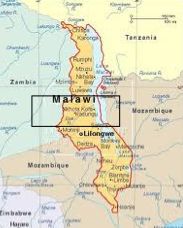Nkhono School Completed on December 15, 2011!
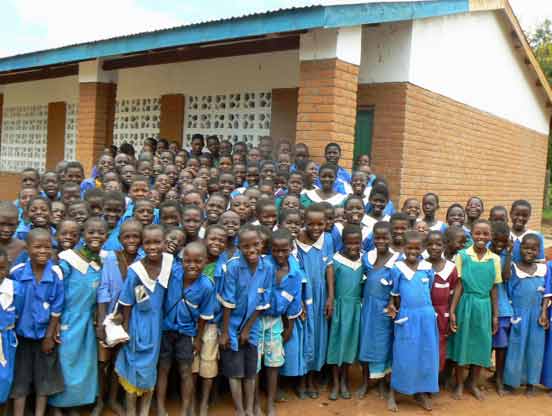
This project began on November 3, 2011 and was completed on December 15, 2011. The people of Nkhono contributed a total of 4,663 volunteer workdays to the project, finishing nearly 3 weeks ahead of schedule.
The new school block in Nkhono has 2 classrooms with a corrugated metal roof and a poured concrete floor. Two latrines were also built near the school. Students will begin attending classes in the new school in February 2012. A Community Education Program for adults will be offered in Nkhono when the new CEP cycle starts in September 2012.
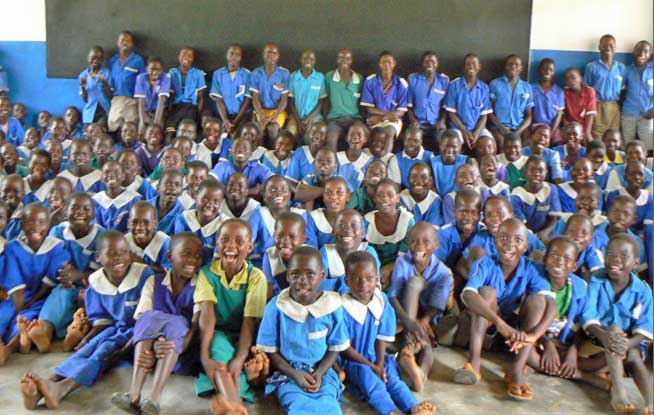
Inside the new school before the furniture arrives!
Nkhono Community Profile
Nkhono is part of Kasungu district, in the central region of Malawi, and was founded in 1964 by the Chipozi Nkhono clan. There are 2,958 individuals and 420 families living in Nkhono today. The majority are part of the Chewa ethnic group, and most practice some form of Christianity. Nkhono is 93 km from the buildOn office in Kasungu and 133 km from the capital, Lilongwe.
The weather in Nkhono is typical of Malawi’s central region, with a warm dry season from August to November and a cooler rainy season from December to April. There hasn’t been a draught in Nkhono since 2001. The people of Nkhono are subsistence farmers who grow primarily tobacco, cassava, groundnuts, soy beans and potatoes to generate an income. Some families also raise livestock or fish in the nearby Lusa River.
The weather in Nkhono is typical of Malawi’s central region, with a warm dry season from August to November and a cooler rainy season from December to April. There hasn’t been a draught in Nkhono since 2001. The people of Nkhono are subsistence farmers who grow primarily tobacco, cassava, groundnuts, soy beans and potatoes to generate an income. Some families also raise livestock or fish in the nearby Lusa River.
Nkhono Prior School Conditions
There are currently 675 students (342 girls and 333 boys) enrolled in grades 1 through 8 in Nkhono. They study with 6 teachers, 5 of whom come from other communities. Formal education has been available in Nkhono since 1978, but there were no permanent classrooms in the village prior to this project. Some classes are taught in a mud brick building built by the community, and many students attend classes outdoors under the tress or seated on the ground under a thatched shade shelter.
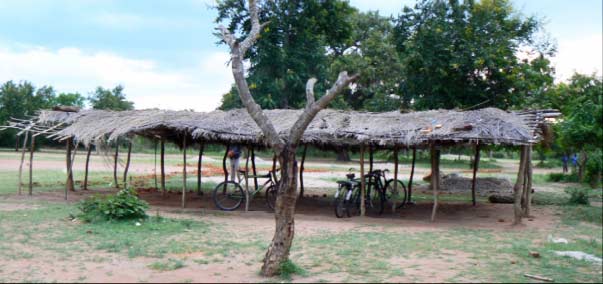
An Old Classroom
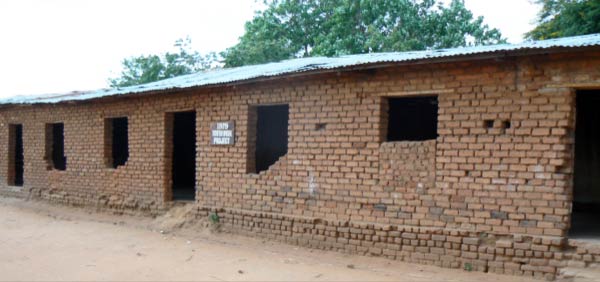
The Old School
The school will improve the conditions of learning as the learners will have a good learning environment and classes will not be interrupted by bad weather. This will motivate more pupils to learn and increase the enrollment. We thank the donors for their support. We hope they can come out here someday to see how happy our students and parents are. Previously people found the area too remote, but with the addition of the block everybody has recognized that the community has changed.
Gift Kamsiamo, community member, age 50
Cooperation is the only tool to develop an area. I watched the community get motivated and saw that unity is really power. I also noted that there is need for continuity in good leadership, and the benefit of the community owning the school.
Leonard Bungani, head teacher
Education leads to self-reliance. With the construction of this school our children will no longer learn under the trees and students will be motivated by the learning environment being conducive for their academic lives.
Senior Group Village Headman Chipozi Nkhono
Before starting construction the villagers gathered local materials for the project, molded and fired thousands of clay bricks, and met with buildOn staff to sign a covenant outlining the following responsibilities:
Community Contribution
• Unskilled labor: 30 workers (15 women and 15 men) per day, six days per week
• Commitment to educating girls and boys equally
• The land on which the school is built
• High quality local materials: sand, gravel, water & rocks
• Volunteer management committee made up of 12 villagers (six women, six men)
• Lodging for buildOn Field Coordinator and skilled laborers in local houses
• Basic construction tools (picks, Community members fire molded clay bricks buckets, etc.) when available
buildOn Contribution
• Architecture and engineering
• Construction materials (excluding local materials) for school and latrine
• Skilled labor and plans needed to build the school
• Project management (buildOn coordinators)
• Instruction in basic construction techniques
Community Contribution
• Unskilled labor: 30 workers (15 women and 15 men) per day, six days per week
• Commitment to educating girls and boys equally
• The land on which the school is built
• High quality local materials: sand, gravel, water & rocks
• Volunteer management committee made up of 12 villagers (six women, six men)
• Lodging for buildOn Field Coordinator and skilled laborers in local houses
• Basic construction tools (picks, Community members fire molded clay bricks buckets, etc.) when available
buildOn Contribution
• Architecture and engineering
• Construction materials (excluding local materials) for school and latrine
• Skilled labor and plans needed to build the school
• Project management (buildOn coordinators)
• Instruction in basic construction techniques
